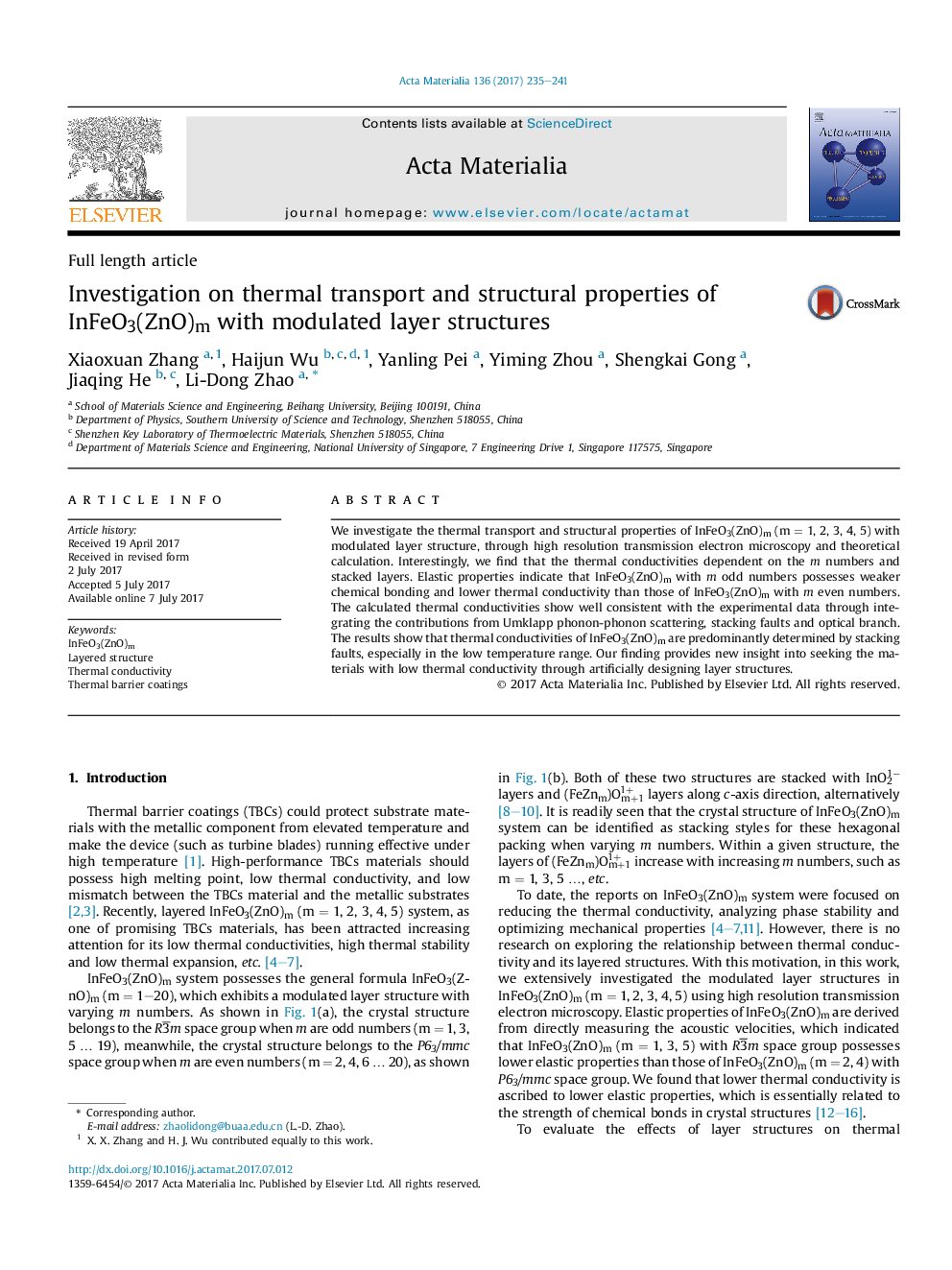| Article ID | Journal | Published Year | Pages | File Type |
|---|---|---|---|---|
| 5436116 | Acta Materialia | 2017 | 7 Pages |
We investigate the thermal transport and structural properties of InFeO3(ZnO)m (m = 1, 2, 3, 4, 5) with modulated layer structure, through high resolution transmission electron microscopy and theoretical calculation. Interestingly, we find that the thermal conductivities dependent on the m numbers and stacked layers. Elastic properties indicate that InFeO3(ZnO)m with m odd numbers possesses weaker chemical bonding and lower thermal conductivity than those of InFeO3(ZnO)m with m even numbers. The calculated thermal conductivities show well consistent with the experimental data through integrating the contributions from Umklapp phonon-phonon scattering, stacking faults and optical branch. The results show that thermal conductivities of InFeO3(ZnO)m are predominantly determined by stacking faults, especially in the low temperature range. Our finding provides new insight into seeking the materials with low thermal conductivity through artificially designing layer structures.
Graphical abstractInFeO3(ZnO)m (m = 1, 2, 3, 4, 5) system exhibits a modulated layer structure through varying m numbers, the thermal conductivities of InFeO3(ZnO)m are predominantly determined by stacking faults which are modulated by m numbers. Our finding provides new insight into seeking the materials with low thermal conductivity through artificially designing layer structures.Download high-res image (141KB)Download full-size image
